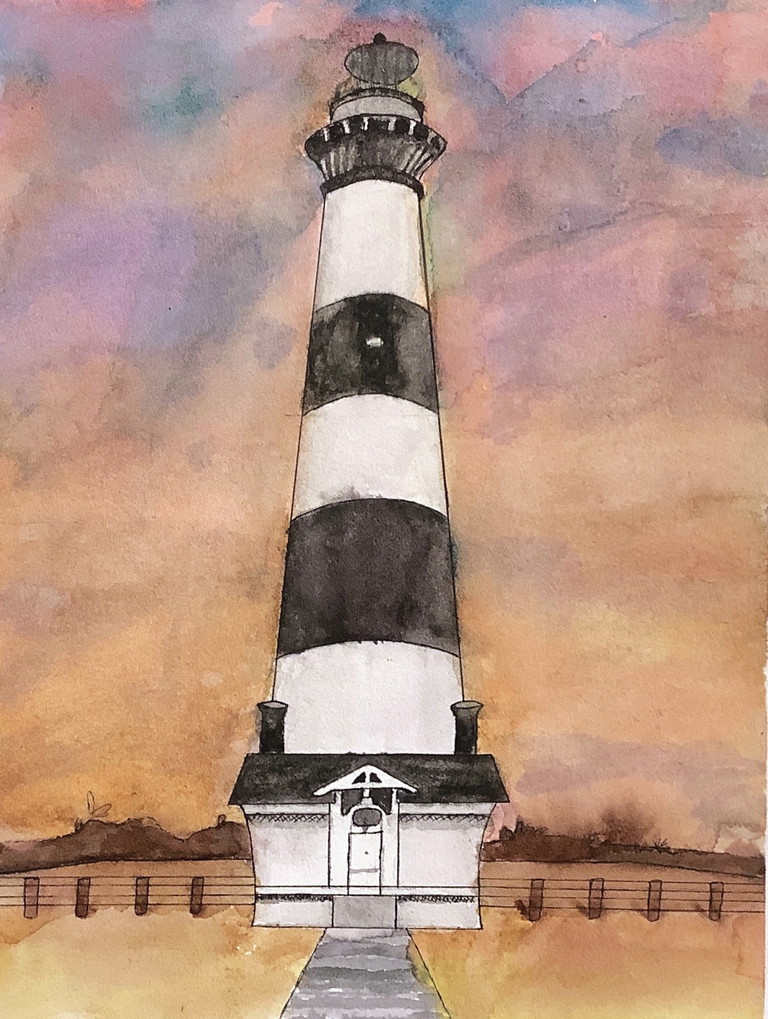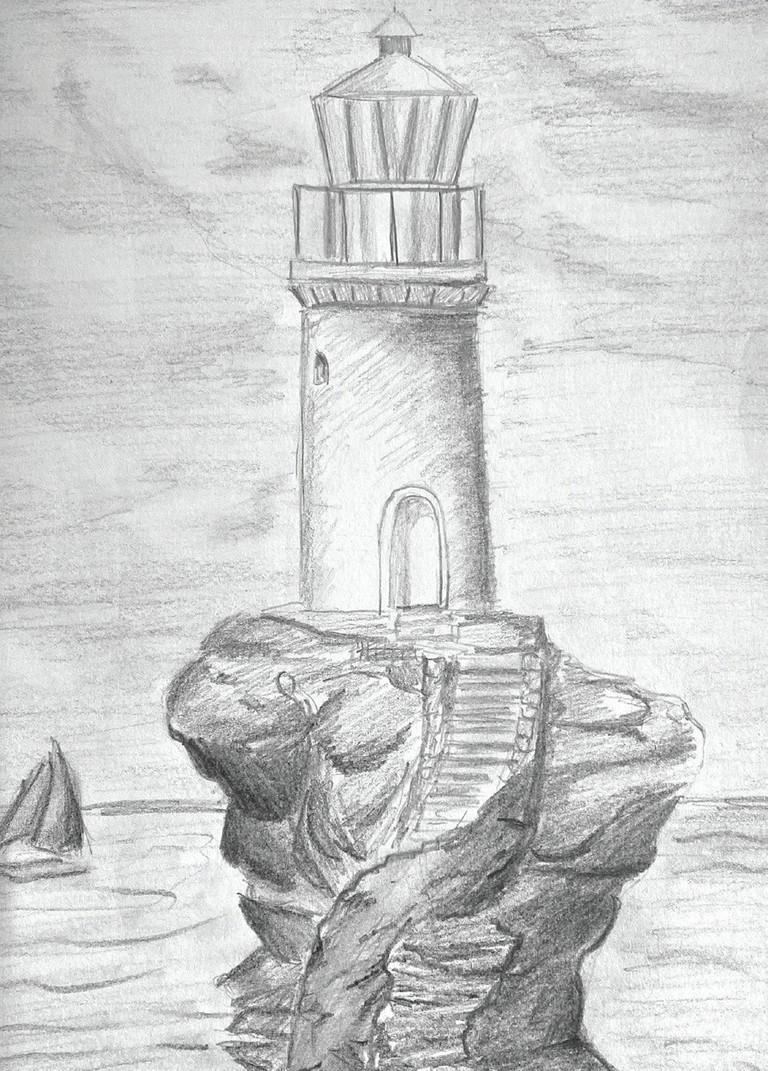MIDDLE SCHOOL

Sean J., lighthouse watercolor, grade eight.
David Anderson
The art room is a space that provides opportunities for students to build a unique set of skills while they convey their ideas and feelings through varied modes of expression. Because of this, art class can be a time when students have wonderful and awkward periods of selfdiscover y and where they can form healthy peer relationships.
A challenge that I’ve experienced over the years is balancing the need for skill development while providing that space for personal expression. When student work consistently looks the same, it can be difficult to justify implementing a project that doesn’t provide personal connectivity to the student.
I want students to relate to the subject matter they are rendering in their art. We know students are more likely to be enthusiastic about their work if the subject matter is relatable. I often wonder if a collective observational exercise can provide an opportunity for students to express themselves as individuals.
Lighthouses as Subject Matter
Over the years, I have incorporated lighthouses as a subject at all three grade levels: sixth grade (clay), seventh grade (drawing), and eighth grade (watercolor illustrations or pastels). The lighthouse is a great example for showing students how simple shapes—a cylinder in this case—can be found in their everyday lives. Furthermore, middle school is a great time in skill development to tackle the complexities of form through drawings and paintings.
Students are prompted to reflect on who or what serves as the “lighthouse” in their life and how this person or thing protects or guides them.
When viewed collectively, the final products for each of these units might suggest there is room for students to be more creative with the materials. These lessons are grounded in skill development, but they are also opportunities for students to connect to the subject matter in meaningful ways.
Symbolism in Hopper’s Paintings
Edward Hopper’s lighthouse paintings are great examples for this lesson, and they also provide a springboard for discussing the purpose of a lighthouse. Students discuss how lighthouses were designed to guide ships through rough waters and challenging weather conditions, providing hope for those in distress.

Timmy E., pencil drawing, grade seven.
Jack H., clay lighthouse, grade six.
Preview Mode - Subscribe to unlock full content


SchoolArts Magazine
Inspiring Creativity Since 1901
A national art education magazine committed to promoting excellence, advocacy, and professional support for educators in the visual arts.
Categories
Explore our inspiring content by topic